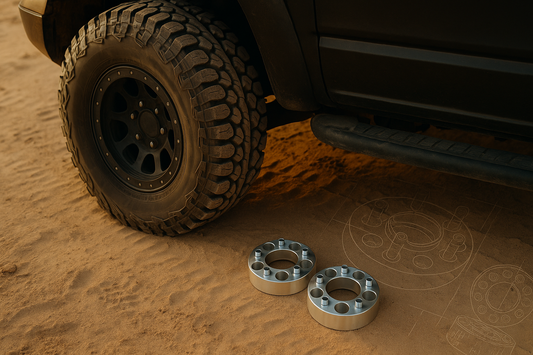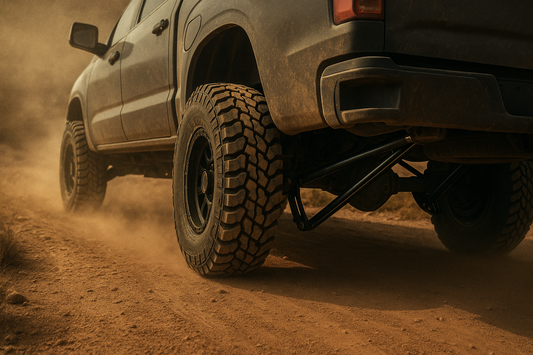If you’ve lifted your truck or haul heavy loads, you might’ve noticed a bit of bounce, shake, or wheel hop under torque. That’s where traction bars come in.
In simple terms: traction bars stabilize your rear axle, helping your truck stay smooth, planted, and in control—even when the road (or trail) isn’t.
This guide will walk you through what traction bars do, how they help, the different types available, and what installation looks like.
Why Use Traction Bars?
Traction bars are designed to fight two common problems in lifted or high-torque trucks: axle wrap and wheel hop.
Say Goodbye to Axle Wrap & Wheel Hop
Axle wrap happens when your truck’s torque causes the rear axle to twist. That twist turns into wheel hop—a jerky, bouncing movement that reduces traction and control.
Traction bars lock in your axle’s movement, keeping your suspension aligned and minimizing bounce. The result? A smoother ride, better handling, and less wear on parts.
Protecting Your Pinion Angle
Another huge benefit of traction bars: they help maintain the correct pinion angle—that’s the angle where your driveshaft meets the differential.
If that alignment goes off, you’ll feel vibrations, lose power, and risk damaging your driveline components. Traction bars stabilize everything under load, helping protect your u-joints, tires, and overall driveline health.
Types of Traction Bars (And When to Use Them)
Different trucks—and different driving styles—call for different setups. Here are the most common traction bar types and what they’re built for:
Slapper Bars
Great for leaf-spring setups, these bars mount near the rear leaf springs and press against them under torque. When your axle tries to twist, slapper bars "slap" the spring back into shape—reducing axle wrap fast.
Best for: Budget-friendly builds, daily drivers, and light towing.
Ladder Bars
A classic design, ladder bars connect the axle to the frame using two long rods, forming a triangle for rigid support. These bars are strong, stable, and excellent for high-torque applications.
Best for: Drag racing, heavy acceleration, and trucks that need serious traction support.
Long Traction Bars
These extend from the axle all the way to the chassis, offering the most stability. They're ideal for lifted trucks that need consistent rear-end control over rough terrain or heavy loads.
Best for: Lifted builds, off-road rigs, and towing setups.
DIY Traction Bars
Handy with tools? You can build your own traction bars with some steel tubing, brackets, and bushings. It’s a cost-effective way to reduce axle wrap—just make sure your welds and geometry are solid.
Best for: Skilled DIYers looking for a custom or budget option.
How to Install Traction Bars
Installing traction bars isn’t too complicated—but getting it right is key to performance and safety. Here’s a general overview of the process:
Step-by-Step Installation
- Position the Bars: Hold your bars in place to find the best angle from the axle to the frame.
- Mark Mounting Points: Once aligned, mark where you’ll drill holes for the brackets.
- Drill the Frame & Axle Mounts: Use the correct bit size and double-check your marks before drilling.
- Secure the Bars: Install the brackets and bolt the bars into place using torque specs from the manufacturer.
- Repeat on the Other Side: Mirror the install for a balanced setup.
Note: While DIY installs are possible, we recommend a professional installation—especially for high-torque or lifted trucks.
Should You Add Traction Bars to Your Build?
If you’ve got:
- A lifted truck
- Noticeable wheel hop
- Plans to tow or haul heavy
- Or just want better traction and ride control
...then yes—traction bars are a smart upgrade.
They don’t just smooth out your drive—they protect your drivetrain, boost tire grip, and extend the life of your parts.
Get the Parts Shipped Fast with LT33
At LT33 Truck Parts, we make it easy to find the traction bars and hardware you need—and get them drop-shipped fast, right to your garage or shop.



